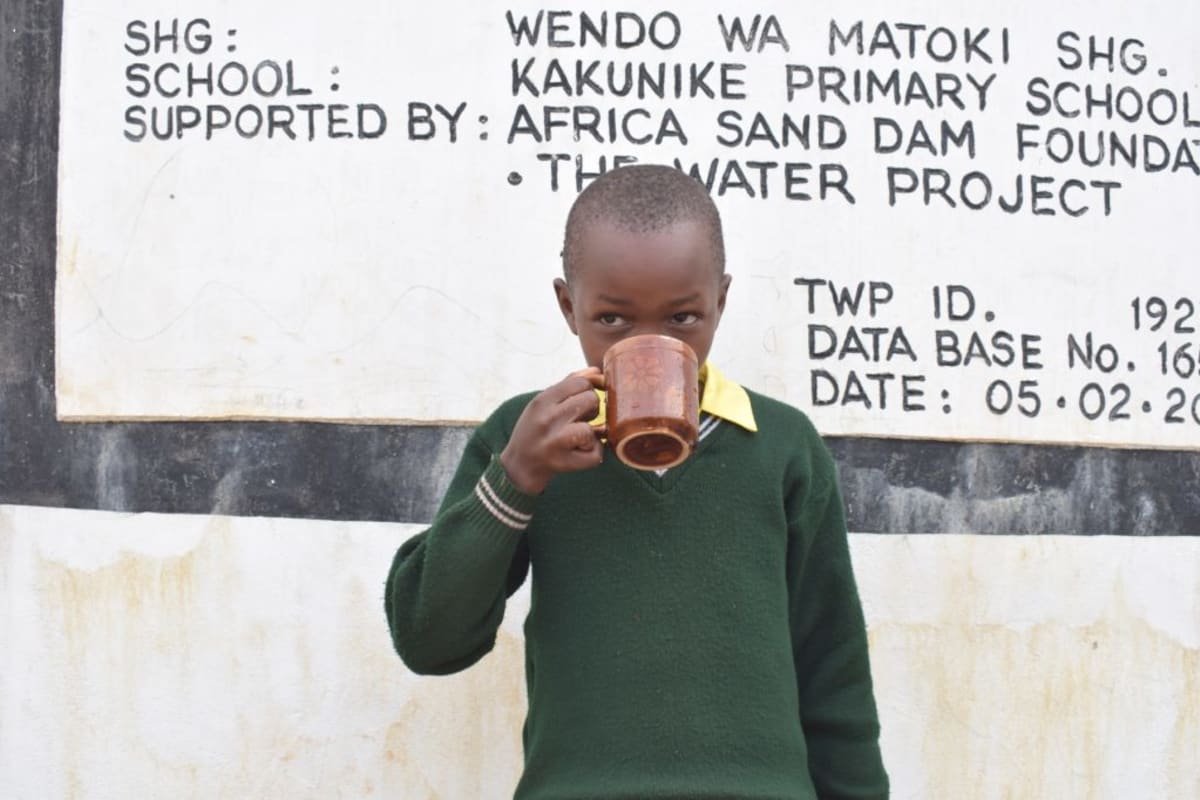"We are facing challenges with accessing clean water in this school. Sometimes when there is no water in school, we are not given food during lunchtime which can be hard for us," said student Sarah Kioko during our visit to Kakunike Primary School.
The more than 600 students at this school must travel more than two kilometers to the nearest seasonal river to fetch water. During the dry season, which was happening when we visited, the students must dig deep holes in the middle of the sandy riverbed to reach water. It looks like this:

As is obvious from the picture, the water is muddy and contaminated from the livestock who drink from it and defecate nearby. This exposes the students to waterborne diseases, forcing some to miss more school in addition to the class time already wasted fetching water each day. To help minimize the trips made to the river, students must arrive at school each day with water from home if they want anything to drink and their school cook to prepare a meal.
Because of that, we witnessed another common sight at the school - containers filled with water lined up outside of classrooms.

"The water we bring to school might not be the safest for consumption," Sarah explained.
"It is usually very risky going to fetch water in the morning as we come to school. When a student does not bring water to school, she is punished and forced to venture out and collect water that is almost always not safe for drinking."
Purchasing water for the school is not a viable option. In rare instances, the school will hire people to travel with donkeys to get water from the riverbed. But the school does not have enough money to regularly pay for such services - so the burden continues to fall on the students. The problem can only be solved by establishing a water point on the school grounds.
Rainwater Catchment Tank
We will build a 104,000-liter rainwater catchment tank for this school. This water will benefit the students, teachers, and supplementary staff. Parents will mobilize the materials needed for construction, such as sand and stone. They will also lend some strong arms to help with the actual construction.
The huge capacity of this tank makes the others look tiny in comparison; 104,000 liters of water storage should provide great alleviation to the water scarcity issues experienced here. As soon as the tank has time to cure, it can begin to collect rainwater for drinking, cooking, and cleaning!
School Background
Kakunike Primary School was established on January 8, 1979 by the community members who saw the need for a school in their region. It started as an Early Childhood Development Center with a population of 71 pupils. Through the support of parents and the District Education Board, the school has grown enormously. Presently, there are more class grades and some 611 students attend the school.
School fees are not paid at this school because the District Education Board (DEB) provides the necessary amenities for the school. The Kenyan government, through the DEB, provides funds for supporting the homegrown school lunch program which would otherwise be funded by the parents.
The students are expected to arrive at school with water by 7 am to perform their duties of cleaning the classrooms, latrines, and the school compound. And then they proceed to morning study hall. Morning assembly takes place from 8 am to 8:20 am. Subsequently, the lessons begin. There are three breaks in between the classes throughout the day for recess and lunch with the day ending at 4 pm.
Hygiene and Sanitation
The school teachers and its students are doing their best to keep the area clean. The compound is organized and neatly kept. There are functional handwashing stations although some of them did not have water during the time of our visit. The latrines are not cleaned often due to insufficient water in the school.
"We also have a challenge with open defecation in the school which is mostly attributed by lack of transitional experience of some students from home to school," said Headteacher Peter Musya Mailu.
Students and staff will be trained for one day. Those in attendance will form a school health club that will promote good hygiene and sanitation practices both at school and home. They will learn all of the steps to proper handwashing, how to treat water, and how to keep their environment clean. The school will also be taught how to best oversee and maintain their new rainwater catchment tank and handwashing stations.
Three handwashing stations will be delivered at the project’s completion. These are 1,000-liter plastic tanks fitted with four taps. The health club and school management will be responsible for making sure tanks are filled with water and that a cleaning agent such as soap or ash is available.

 Rainwater Catchment
Rainwater Catchment
 Rehabilitation Project
Rehabilitation Project

































